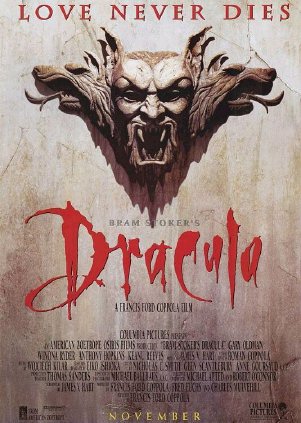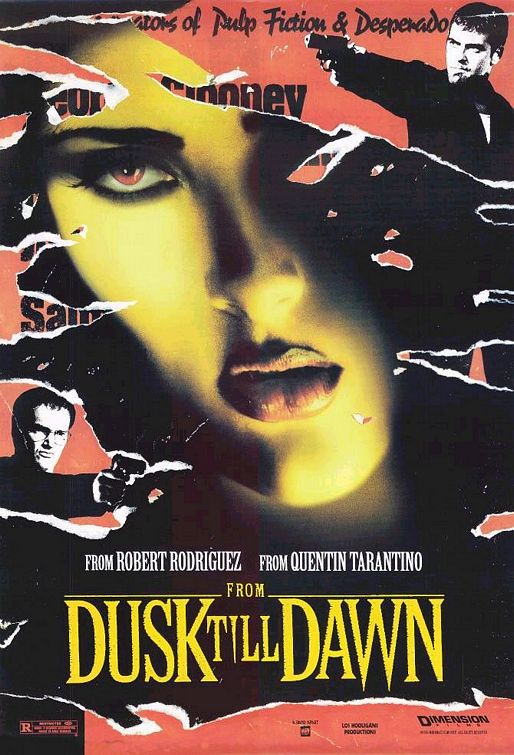

Since the creation of the horror genre in film, the vampire has been a pivotal and often reconceptualized figure within the genre. In fact, there is an entire sub-genre in horror that is devoted to vampires due to their routine presence within the genre. Although depictions of vampires have drastically changed since their first appearances in film in the early 20th century and, as Nina Auerbach asserts in her text "Our Vampires, Ourselves", "vampires continually change and adapt, so that each era's version of the vampire 'embodies' that time period" (Auerbach, 1), one thing about vampires has stayed fairly consistent over the years: their lust for human blood. In this section of analysis I will be focusing on depictions of vampires consuming human blood in order to situate the figure of the vampire within the discourse surrounding blood in film. By focusing on the way in which vampires consume blood, this section of analysis will delve into both the discourses surrounding vampires and the discourses surrounding blood in film.

|
In order to do this type of analysis, I have chosen two different films that center around vampires and their oftentimes grisly interactions with humans. The two films which I have chosen for this section of analysis are Robert Rodriguez's "From Dusk Till Dawn" and Francis Ford Coppola's "Bram Stoker's Dracula". While the vampires that appear in these two films are incredibly different--Rodriguez's vampires morph into gruesome and ugly creatures when they begin feeding, while all but Dracula himself lack that degree of transformative power in Coppola's film--the vampires in both of these films share some commonalities. The most pertinent of these commonalities to this analysis is the fact that in order to survive, the vampires in both of these films must consume human blood. While Auerbach is certainly correct in her theorization that representations of vampires change over time in order to reflect the era in which these representations are produced, it is telling that out of all of the traits vampires have possessed that have varied over time--incredible strength and speed, the ability to fly--one trait that has stayed fairly consistent is their need to consume warm human blood. |

|
| Another trait of vampires in the horror genre that has stayed consistent over time, one which is integral to the discourse surrounding vampires in film, is their incredible longevity--to assert that vampires are immortal is somewhat of a misnomer considering how often vampires are killed by humans or even other vampires in film. This longevity is a key component to the narcissistic elements to the discourse surrounding vampires in film (Godwin, 92). While the longevity that vampires possess can not directly be seen in the manner in which they consume human blood, their longevity and consumption of blood are inextricably linked and this link is integral to the discourses surrounding both blood and vampires. One clear example of this link can be seen in Coppola's film when Dracula attempts to turn Mina into one of his brides. Unlike many of the other scenes in "Bram Stoker's Dracula" in which Dracula is draining his victims of their blood, this particular scene features the character Mina (who at this point is still a human) consuming Dracula's blood as well. This scene is also dissimilar from many previous scenes in the film that featured the consumption of blood because Mina's character isn't consuming blood from Dracula's neck, but from just under his breast. The blood that Mina consumes from Dracula's breast then ceases to be read simply as blood; his blood, which has the ability to grant Mina the same degree of longevity that he possesses, has now taken on reproductive properties. This shift towards possessing reproductive properties consequently shifts the perception of Dracula's blood to be something more akin to a combination of sperm and breast milk--a strange commingling of maternal and paternal reproductive properties that is indicative of the cross-gendered element of vampires (Gardenour, 59). As Julia Kristeva points out in her work "Powers of Horror: An Essay on Abjection", unlike many other bodily fluids such as blood, feces, or urine which have polluting properties "neither tears nor sperm, for instance, although they belong to borders of the body, have any polluting value." (Kristeva, 71). So, in a sense, the blood that Mina consumes from Dracula's breast is lacking the same polluting qualities that the blood which Dracula consumed earlier contained. In another sense, the blood that Mina consumes holds even more polluting properties than other blood featured in the film because this blood has polluted two signs previously viewed as untainted by subsuming their meanings. Dracula's blood, which can be read as having a liminal meaning in that it signifies both death and reproduction, is also indicative of the liminal status which vampires possess in that they are both dead and alive at the same time (Peirse, 161). |


|


|
Within this same scene, Dracula's claims about the power of his blood to free Mina from death and disease are not the only indicators that his blood may be read as possessing reproductive properties. During this scene, Dracula's character is very clearly emoting pleasure much more so than pain as Mina drinks his blood. As Mina drinks more and more of Dracula's blood and comes closer to completing her transformation into a vampire, Dracula shudders and moans more and more intensely with pleasure until it appears that he is going to have an orgasm. Before Dracula can achieve this orgasm or Mina can be converted into a vampire, however, the ritual they are performing is interrupted by a group of men led by Professor Van Helsing. This is also not the only scene in the film where the consumption of blood has contained sexual meanings. Prior to this scene, there is a scene where Dracula begins feeding on another female character in London named Lucy. After Dracula makes his entrance into the room where Lucy is sleeping, he dominantly stands over her and begins to drain her of blood. As Lucy is drained of her blood, she moans and squirms as if this draining of blood was a sexual act and not a violent one. At the end of this encounter, Lucy's body is further fetishized and sexualized when her breast is exposed to the audience. As well as her breast, Lucy's neck is fetishized in this scene when she continues to rub the wounds on her neck that Dracula left as if this was where the pleasure she experienced earlier was derived from. |
Dracula's consumption of Mina and Lucy's blood are not the only scenes of blood consumption in Coppola's film that have sexual connotations as well. The scene in which Dracula's three vampire brides drain Jonathan Harker's blood is also a highly sexualized scene. The three brides seduce Harker on the behest of Dracula, and their seduction culminates in Harker being drained of some of his blood. While both Dracula and his brides are shown as having dominant positions when they drain their respective victims of blood, the brides function as sexual objects with little to no agency while Dracula, on the other hand, is portrayed as a subject with agency and control. The gendered aspect of the consumption of blood can also be seen in Harker's reaction to having his blood drained. Unlike the female characters who achieved sexual gratification as they were drained of their blood, Harker is filled with terror and dread as his blood is consumed by the brides.

|
While Coppola's film tends to solely objectify the female vampires, Rodriguez's film "From Dusk Till Dawn" presents the female vampires as both objects and subjects. In Rodriguez's film, the leader of the vampires is revealed to be a female vampire only after she drains one of the male character's blood and issues the order for the other female vampires to do likewise. Prior to their consumption of blood and transformation into grotesque creatures, the female vampires are portrayed as sexual objects. Before transforming, the breasts (some fully exposed, some only partially) of the female vampires are what are fetishized. After consuming blood, however, the vampires' mouths are what are fetishized. This fetishization of the mouth--an area which Freud linked to "anatomical transgression" and a type of sexuality (De Block and Adriaens, 182)--is further expressed in a scene in which the first of the main characters, "Richie", returns from the dead as a vampire. Although Richie has yet to consume any blood, when his brother Seth looks at him he doesn’t see the same ghoulish face that the others see. Instead, Seth sees a strange vampire-human hybrid version of Richie where Richie's mouth is covered in blood although he's yet to consume any blood. The vampires' consumption of blood as an act has thus become a marker for their identity in the minds of both Seth and the audience. |

|
In both of these films, the consumption of blood is portrayed as a highly sexualized and simultaneously violent act. It is also notable that in both of these films, the consumption of blood was a gendered act for both those committing the act and the victims of these acts. The vampiric consumption of blood in horror films also further highlights the duality of the connotations of blood in film--it can be a marker of death, life, and sometimes of both simultaneously.
| Blood as Rebirth | Consumption of Blood/ Vampires | Blood Baths | Home |